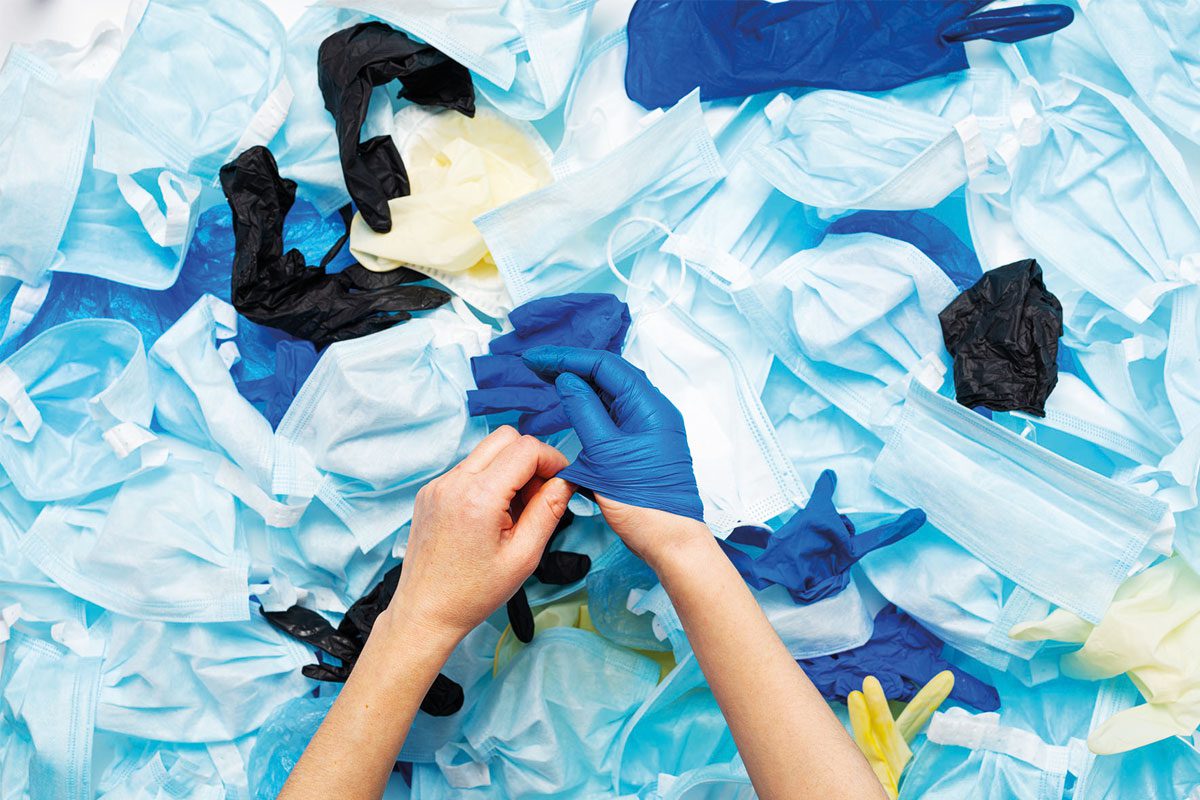As the world grapples with a seemingly never-ending and ever-growing mountain of surgical masks, plastic face shields, and medical gloves and gowns, engineers are turning their minds to conceiving of new and circular solutions to PPE waste, with notable recent examples including projects from Cornell University and the University of Auckland.
A medium-temperature reaction, pyrolysis can reduce the plasticized medical-protection garb back into an original form – such as chemicals and petroleum – and then recycle it, perhaps into fuels, according to a new study by Cornell University.
The method involves no incineration or landfill use.
Xiang Zhao, a doctoral student, working with his advisor Fengqi You, professor in energy systems engineering, published the proposed technology framework in the journal Renewable and Sustainable Energy Reviews.
Their framework – first focusing on New York state – proposes collecting waste PPE from hospitals and medical centres, and then sending it to pre-processing and decontamination facilities in New York or Suffolk counties. There, it would be shredded, sterilized and dehydrated to become small particles, and then brought to an integrated pyrolysis plant, like one contemplated for Rockland County, north of New York City.
In the case of You and Zhao’s model, the medium-temperature pyrolysis (about 650ºC) can deconstruct the plasticized gowns and gloves, which are derived from petroleum, into chemicals such as ethylene, butane, gasoline, bauxite, propene, propane, diesel, light naphtha and sulphur.
“For an analogy, pyrolysis is similar to baking in an oven,” said You. “If you set the oven temperature very high, your meat becomes a chunk and charcoal. But if you use a lower oven temperature, the meat is going to be juicy. In pyrolysis, the temperature is the trick.”
Health care facilities around the world are creating about 7.5 pounds per person of PPE waste daily through COVID-19-associated services, according to the UN Environment Programme.
To get a sense of the scale of the challenge, one hospital with 300 medical personnel could generate over a ton of this waste daily. That translates to more than 400 tons of annual medical PPE waste in a single COVID-handling facility, You said.
In the paper’s energy analysis and environmental lifecycle assessment, the proposed optimal PPE processing system avoids 41.52% of total landfilling and 47.64% of the incineration processes. This method shows an environmental advantage by reducing total greenhouse gas emissions by 35.42% emissions from conventional incineration and energy saving by 43.5% from landfilling, the researchers said. “This is a viable strategy for disposing and processing waste PPE,” You said. “It is a treatment method with low GHG emissions, it alleviates fossil fuel emission depletion and it saves a lot of polluting material from landfills.”









